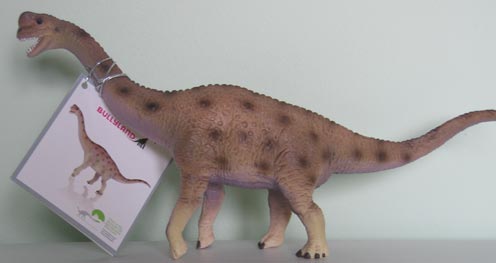Euro 2008 – Who has the most Prehistoric Animal Genera?
Just for a little bit of fun, todays’ article attempts to link the start of the European football championships with geology and palaeontology. Some of our staff members have been in the office today, trying to avoid hearing about the start of the European football championships. With no home country participation, the championships may well pass us by but there are sixteen teams in the tournament all aiming to do what the Greeks did in the last tournament held in 2004 and become the champions of Europe.
Prehistoric Animal Genera
We have compiled a quick and very approximate comparative table of the sixteen finalists in this tournament to see which country could be heralded as the “European Champions” in terms of the number of different prehistoric animal genera and ancient human species found in that particular country. Everything Dinosaur staff have compiled a table using various information sources and calculated a ranking for each country participating in the European Championships. The number of dinosaur and prehistoric animal genera have been quickly assessed, weighted against the actual size of the country and correlated against the number of mentions each country has had in our own web log.
There is no real scientific method behind our research, the information has been compiled just as a little bit of fun whilst working in the office this afternoon. According to our study, and weighted analysis of each country, Croatia comes out with the lowest rank (16) of the countries that have qualified for the finals. There have been relatively few finds in what is quite a small European country. Austria and Switzerland, the joint hosts may not be fancied by many football analysts to make much of an impact in the actual football tournament, but under our brief, unscientific study the hosts fair very differently. Austria for example, comes out with a ranking of fifteenth, whilst Switzerland in contrast are ranked seventh – the equivalent of making the quarter finals.
Portugal, one of the favourites for the football trophy comes out with a high ranking under our study. This relatively small country has had a number of different prehistoric animal genera discovered within their national boundaries. Fossils of dinosaurs such as Brachiosaurs, Allosaurids and Iguanodontids have all been reported from Portugal. As a result, Portugal comes out ranked fifth under our analysis.
Surprise, surprise based on our very crude reckoning we have crowned Germany as European champions. Not only do the Germans have an excellent record in the European Championships, after all, they are one of the favourites to win the competition, but they also have made a huge contribution to palaeontology and geology. Many important fossil finds have been discovered in Germany, examples being the likes of Ichthyosaurs, Liliensternus, Paratypothorax and of course perhaps one of the most important fossil finds of all – Archaeopteryx.
European Championship Table 2008
| European Champions – Prehistoric Animal Genera v Country Size (Weighted and Ranked) | |||||
|
Country size/km |
Prehistoric Animal Genera |
Examples of Genera |
Mentions in Blog |
Rank |
|
| Group A | |||||
| Czech Republic |
79,000 |
4 |
Edaphosaurus, Cave Bear |
0 |
14 |
| Switzerland |
41,000 |
1 |
Plateosaurus |
3 |
7 |
| Turkey |
783,000 |
8 |
Cave Bear |
1 |
9 |
| Portugal |
92,000 |
4 |
Brachiosaurus, Dacentrurus |
6 |
5 |
| Group B | |||||
| Austria |
84,000 |
5 |
Rhabdodon, Struthiosaurus |
1 |
15 |
| Croatia |
56,000 |
3 |
Neanderthal Man |
0 |
16 |
| Germany |
357,000 |
21 |
Archaeopteryx, Juravenator |
30 |
1 |
| Poland |
312,000 |
6 |
Sauropods, Ornithopods, Allosaurs* |
0 |
10 |
| Group C | |||||
| Holland |
41,000 |
3 |
Mammoths |
3 |
13 |
| Italy |
301,000 |
12 |
Scipionyx, Eudimorphodon |
3 |
11 |
| Romania |
238,000 |
7 |
Valdosaurus, Rhabdodon |
2 |
12 |
| France |
551,000 |
18 |
Liliensternus, Dacentrurus, Plateosaurus |
9 |
2 |
| Group D | |||||
| Greece |
132,000 |
4 |
Cave Bear |
4 |
6 |
| Russia |
17,098,000 |
7 |
Psittacosaurus, Dimetrodon |
9 |
4 |
| Sweden |
450,000 |
3 |
Hypsilophondontids |
0 |
8 |
| Spain |
505,000 |
13 |
Baryonyx, Pelicanimimus |
6 |
3 |
Picture credit: Everything Dinosaur
Note
A number of different types of prehistoric animal have been identified within Poland, many of the dinosaurs have been identified from fossilised footprints (trace fossils). The actual genera cannot be determined under these circumstances but the taxonomic family can usually be stated with a degree of certainty.
So based on our findings and this very rough and ready analysis, it looks like Germany will be champions with France the runners up. The Germans do have an advantage as they have a tradition of prehistoric animal model making which is perhaps why that country receives a lot of mentions in our blog. Nevertheless, Germany has a proud heritage of scientific discovery and as a nation can claim to have some very important palaeontological sites within their boundaries – sites such as Holzmaden and Solnhofen with their late Jurassic sediments as well as early Tertiary sites such as the quarries near Messel in southern Germany.
Some typical prehistoric animals from Germany:
Iguanodon, Plateosaurus, Emausaurus, ichthyosaurs, Europasaurus, Batrachotomus and of course Liliensternus which was named in honour after Hugo Rühle von Lilienstern, a German palaeontologist.

Picture credit: Everything Dinosaur
A model of dinosaurs made by Bullyland of Germany: Bullyland Prehistoric Animal Models.






Leave A Comment